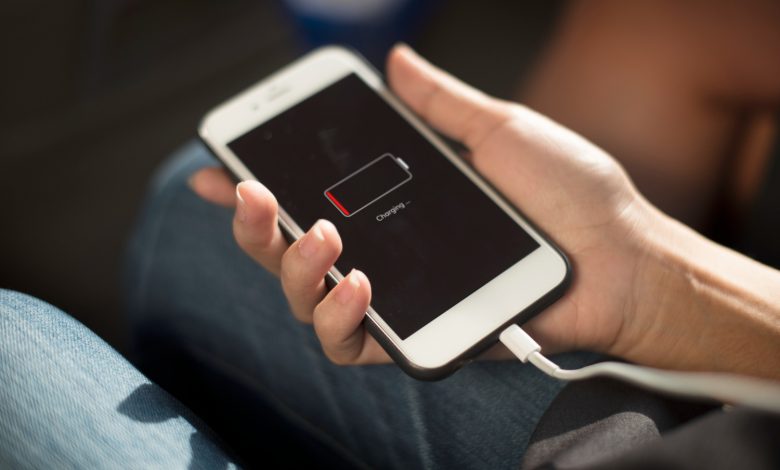Juice Jacking – A Charging Port That Steals Your Data

You’ve just landed after a long flight, and your phone’s battery is nearly dead. Out of the blue, you spot a public charging station – exactly the lifesaver you needed. But you noticed that this is not the typical plug where you’d need to use an adapter, it’s just a USB port. Who cares, right? What could possibly go wrong? You’ve used one before, and nothing has ever happened to you anyway. The most important thing is that your “life” is charged.
Wrong! Have you ever considered that the public USB ports that you’ve been using all this while are not as safe as they seem?
Public charging stations, typically found in airports, malls, hotels, and even in some restaurants or cafés, can be vulnerable to a cyber attack known as “juice jacking.” This attack occurs when cybercriminals tamper with the USB ports, allowing them to load malware onto any connected device. Once infected, your device could have all of its data stolen, be loaded with additional malicious software, or even be completely disabled.
Listen, whether you’re using an iPhone, Android, tablet, or even a smartwatch—if it can connect via a USB, it’s definitely vulnerable.
Plug In and Be Hacked
Juice jacking is a type of cyber attack that exploits the dual functionality of USB connectors, which are designed for both charging devices and transferring data. While this dual-purpose design is convenient for transferring files between your phone and computer, it also opens the door to potential cyber threats. When you plug your device into a compromised charging station, cybercriminals can install malicious software on your device.

Patrick Tiquet, Vice President of Security and Compliance at Keeper Security, explained, “This form of attack can lead to unauthorised access to your personal data or even complete control over your device.” The fact that USB ports can transfer data while charging creates a vulnerability that cybercriminals are eager to exploit.
Juice jacking is not entirely a new phenomenon, but its prevalence has grown as public charging stations have become more common. Initially, the idea of hacking through a USB port seemed far-fetched, but as technology advanced, so did the tactics of cybercriminals. Early instances of juice jacking were rudimentary, often requiring physical access to the charging station to install malicious hardware. However, modern juice jacking methods have become more sophisticated, utilising software-based attacks that can be executed remotely.
Despite its evolution, the actual risk of juice jacking remains a topic of debate. While juice jacking hasn’t been widely reported, the risk remains significant, especially given the potential damage.

Rik Ferguson, Vice President of Security Intelligence at Forescout Technologies, explained that “juice jacking remains (as far as we know) a theoretical risk.”
“While proof-of-concept research has demonstrated the possibility of bad actors uploading malware onto public USB charging stations, this has never been observed in the wild,” he continued.
Risks of Juice Jacking
The implications of juice jacking can be quite severe. If it has happened to you without you even noticing about it, I have some really bad news for you. Once malicious software is installed on your device, you can expect any of the following at any moment:
- Data Theft: Cybercriminals can access and steal sensitive information stored on your device, such as passwords, financial information, and personal messages. This data can be used for identity theft, fraud, or sold on the dark web.
- Device Control: In more advanced attacks, the malware can give hackers full control over your device (more like when you’re using TeamViewer), allowing them to do anything they want which includes, but not entirely – manipulate your apps, track your location, or even spy on your activities. Once they have this level of control, they can use them for blackmail, extortion, or corporate espionage.
- Further Infections: The malware can be spread to other devices that are connected to the compromised device, creating a chain of infections that can affect a broader network. It is absolutely a huge concern for businesses if a single device is infected as it can also infect other devices, leading to widespread data breaches within the organisation.
Spotting a Shady Charging Port
While detecting the physical tampering of a charging station can be challenging, there are some red flags that users should watch for. Patrick Tiquet pointed out that it is vital to “Look out for loose or wobbly ports, unusual additions to the charging station such as extra wires or hardware, and any visible damage or modifications to the ports. These could be signs the charging station has been tampered with.”
However, it’s also essential to note that even if a charging station appears normal, it could still be compromised. The sophistication of modern juice jacking techniques means that physical signs of tampering are not always present. Some attacks rely on software-based methods that leave no visible trace, making them even more insidious.
Steps to Take After Being Juice Jacked
If you suspect that your device has been compromised through juice jacking, immediate action is crucial. Patrick Tiquet offers the following steps to mitigate potential damage:
- Disconnect Immediately: Unplug your device from the charging station as soon as you suspect an issue. This can prevent further data transfer or malware installation.
- Run a Security Scan: Use your device’s antivirus software to scan for any malware or suspicious activity. Many modern security tools can detect and remove malicious software, helping to neutralise the threat.
- Update Your Device: Ensure your device’s operating system and apps are up to date, as updates often include security patches. Keeping your software updated is one of the best defences against known vulnerabilities.
- Change Your Passwords: Change passwords for any sensitive accounts accessed from your device. This is particularly important if you notice any unusual activity or if your device has been behaving strangely.
- Monitor Activity: Keep an eye on your accounts and device activity for any unauthorised transactions or actions. Cybercriminals may not immediately use the stolen data, so continued vigilance is necessary.
The best way to protect yourself from juice jacking is to avoid using public charging stations whenever possible. However, if you find yourself in a situation where you must charge your device in public, there are several precautions you can take to minimise the risk:
- Use a Portable Power Bank: Carrying a portable power bank allows you to charge your device on the go without relying on public charging stations. This is the safest option to avoid potential juice-jacking attacks.
- Use an AC Power Outlet: Whenever possible, plug your device into an AC power outlet using your own charger instead of a public USB port. This eliminates the data transfer functionality of USB connections, reducing the risk of malware installation.
- Use a Power-Only USB Cable: These cables are designed to allow charging without enabling data transfer, making them a practical tool for safe public charging. By preventing data exchange, they protect your device from potential malware.
- Invest in a USB Data Blocker: A USB data blocker is a small device that fits between your charging cable and the USB port, blocking any data transfer while still allowing power to flow through. This quite a straightforward yet effective tool can be a valuable addition to your travel gear.
Ignorance Is Not Bliss
Juice jacking may not be as widely recognised as other forms of cyber attacks, as most of us are aware that we should not simply plug in our smart devices to an unknown, odd-looking public charging port. But that is not the case for some. What if they are not familiar with the current tactics of cyber attackers? Or what if they are in desperate need to charge their phone and that is the only place they can do so?
As our reliance on mobile devices continues to increase, so too does the need for awareness and proactive measures to protect our personal information. By understanding what juice jacking is, recognising the signs of a compromised charging station, and taking steps to protect your device, you can reduce your chances of falling victim to this silent threat.
Remember, no matter how trivial it may seem, a simple threat is still a threat.



